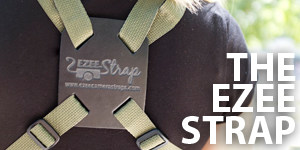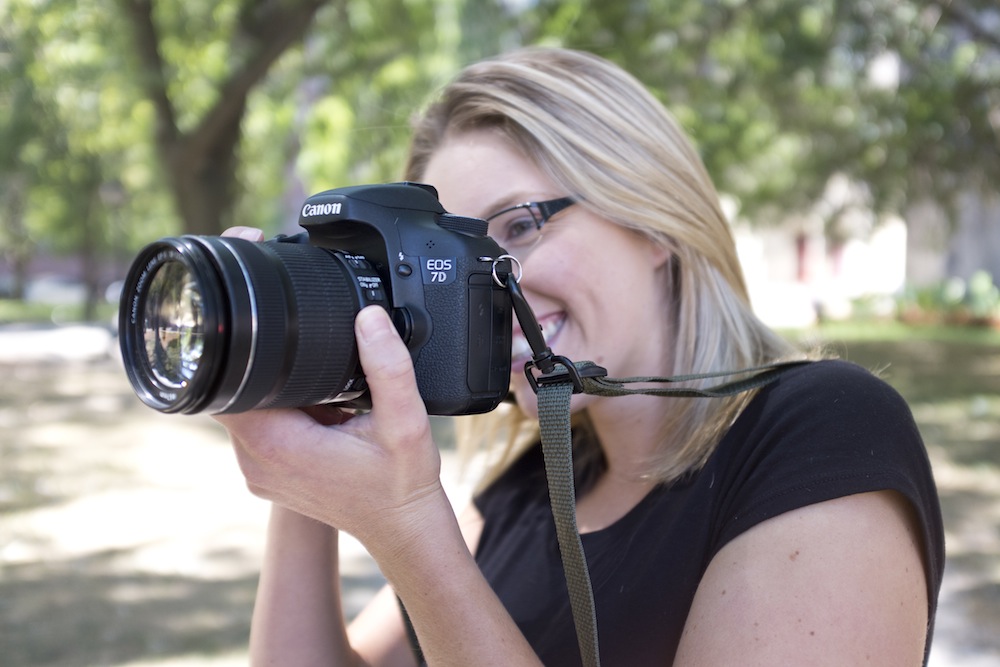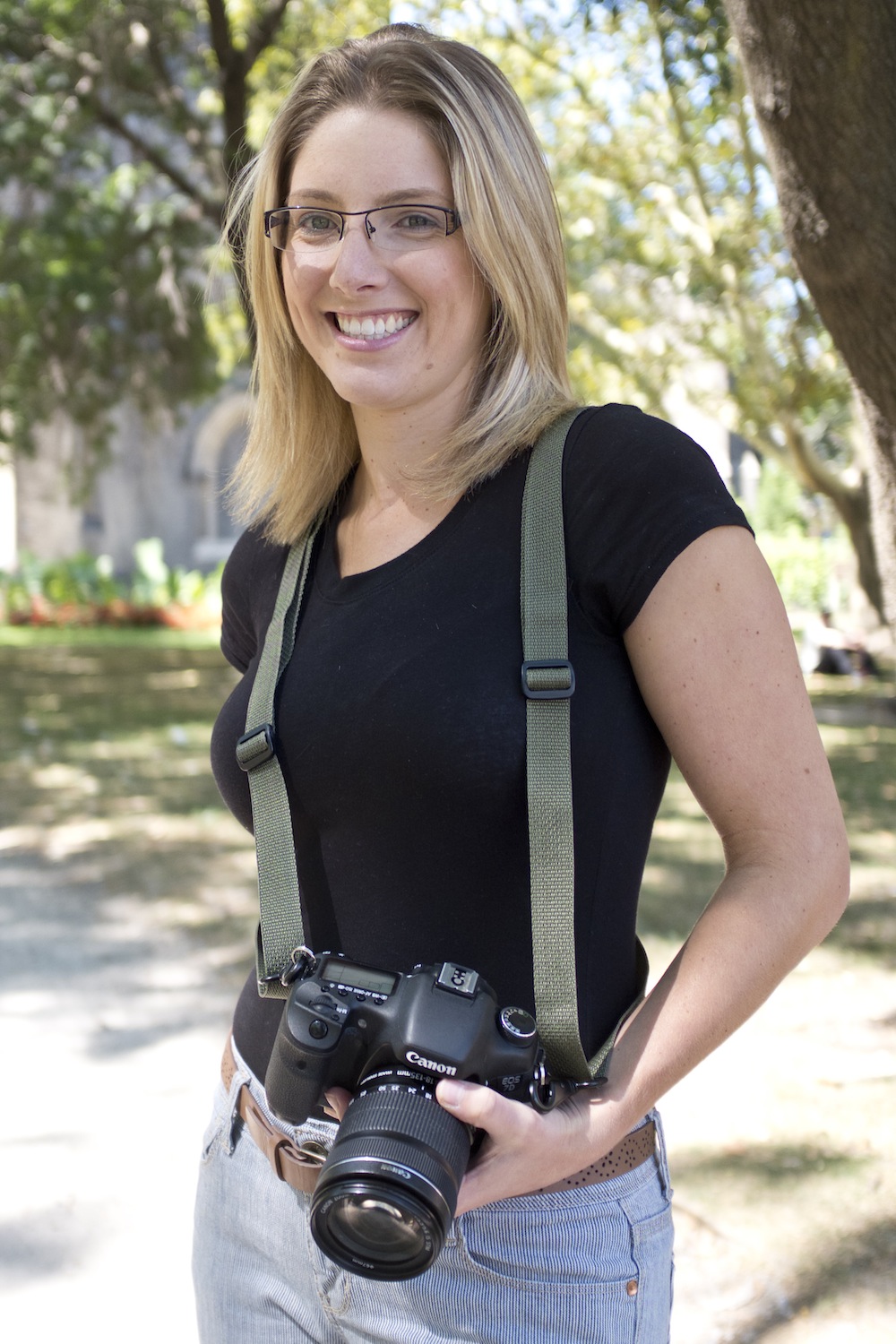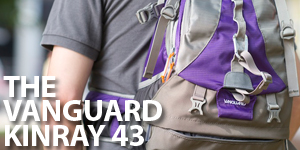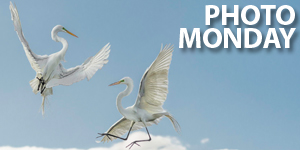The one thing that I’ve learned – that sticks out above all others – about camera bags and straps from years of shooting is that there is never one single product that will satisfy every single photographer. The way I see it though, that’s not necessarily a bad thing. This way of thinking means that there will always be an amazing variety of products on the market that perform similar tasks but in different ways.
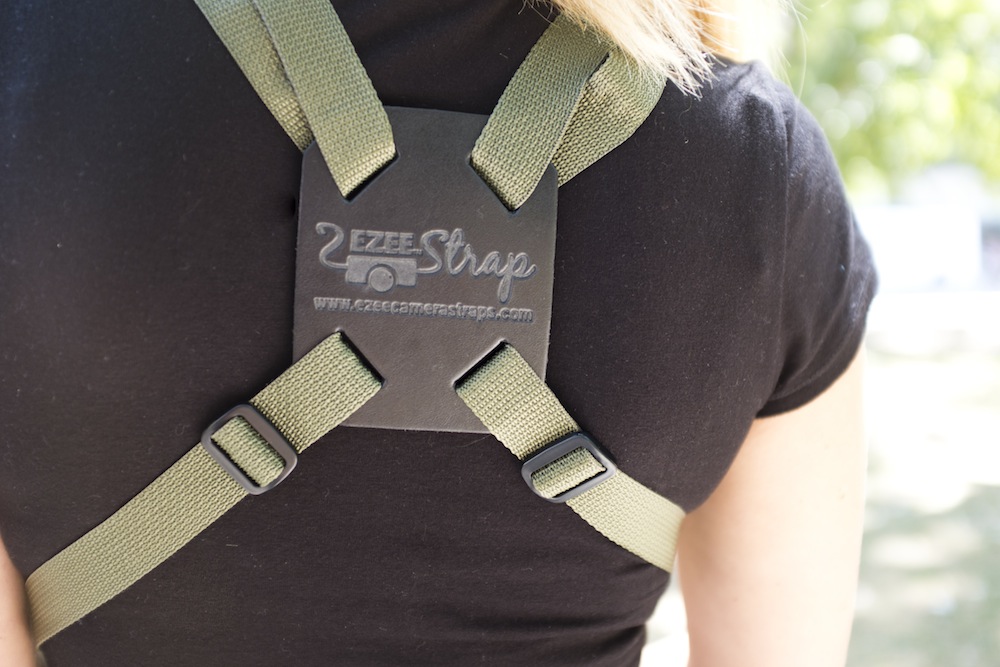
With a centrally positioned leather patch and two woven camera straps, the Ezee Strap positions your camera in front of you, where for most people it is the easiest to reach for. Ideally positioned right between your shoulder blades, the Ezee Strap takes much of the load off of your shoulders and neck, and allows for comfortable wearing with quick and easy access to your equipment. In my trials with this strap, I found that it was extremely simple to grab my camera and bring it up to my eye with very little effort. Also, with the straps properly adjusted, walking around with the camera in front of me – and somewhat tight to my body – didn’t cause any discomfort at all. Carrying a fairly heavy Nikon D3s and a 24-70mm F/2.8 lens, there was very little discomfort on my back and shoulders, and virtually nothing could be felt on my neck.
As a wedding photographer, the speed with which I can access my camera and bring it to my eye is of the utmost importance. When shooting horizontally, I found that this strap worked absolutely perfectly. However, when shooting vertically, I did find that the snap hook on the right side of the camera tended to fall right into the place that I would normally have placed my thumb. For most photographers, this would not be an issue, but as I’ve used my camera’s custom functions to disable auto-focus on the shutter button and move it to a custom button at the rear of the camera, I found myself having to actively move the snap hook out of the way each time I lifted the camera in vertical orientation. This is just my experience, which is because of the custom functions I’ve enabled on my camera. For many others, this will likely not cause any problems.
If you’ve found that traditional camera straps and slings have put too much pressure on your body to carry your camera comfortably for an extended period of time, it might be worth your time to check out an Ezee strap for yourself.
